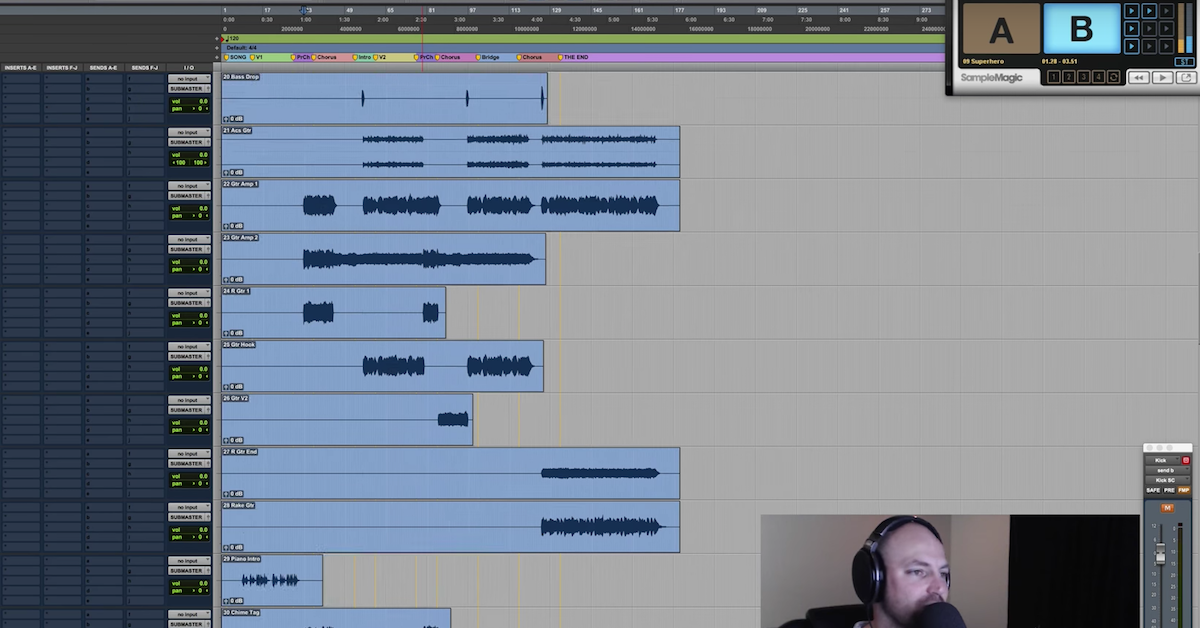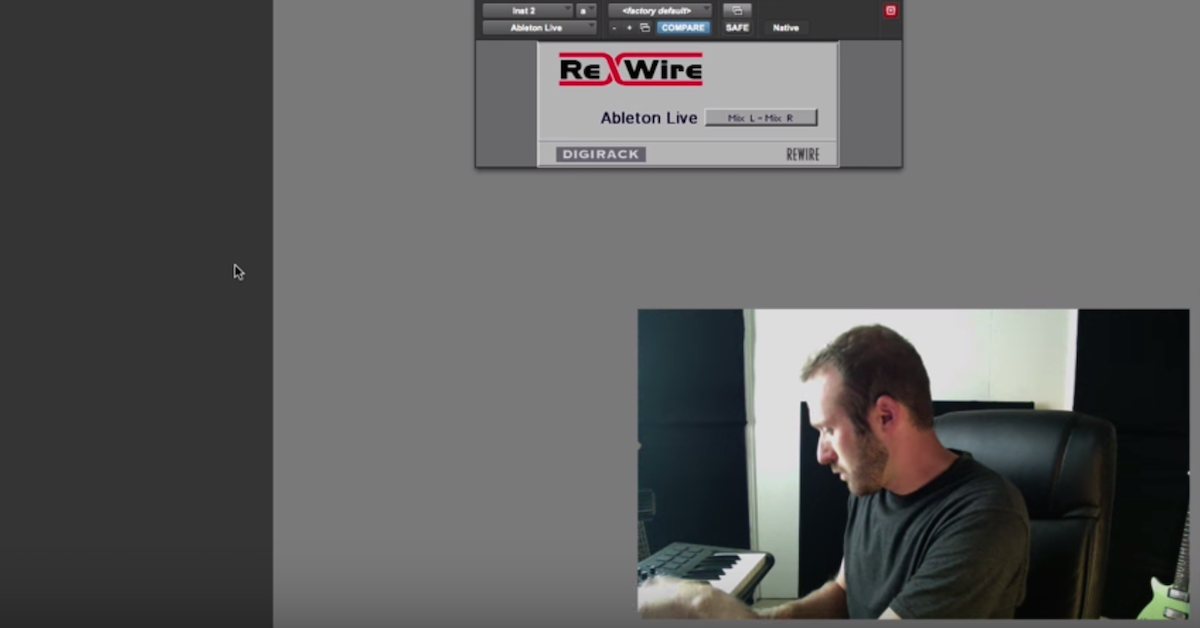Mellotron: The First Sampler Instrument
Article Content
I remember when virtual instruments first hit the market. There was a ton of excitement, mainly because it gave musicians access to vintage instruments like Rhodes, Wurlitzer, and vintage synths that they didn’t always have access to. At the time, this seemed like quite an advancement in technology. And it was.
Now it’s 2020, and companies have been steadily improving the quality of their sample players and instrument emulations. Companies like Spectrasonics and Spitfire Audio have released some of the best-sounding virtual instruments. Along those lines, I’ve started to rethink my studio and workflow this year. I compose a lot of music these days, both for my projects Future Relics and Fife & Drom, as well as for TV shows.
One thing that stood out was my need for hands-on tweaking. When you think about playing a keyboard instrument, you think about pressing keys. But playing with the controls is just as much a part of developing your desired sound.
A good friend Nick Oddy lent me his new Mellotron M4000d Mini while he was taking a trip. I have long loved the sound of the Mellotron. It’s on some of my favorite records.
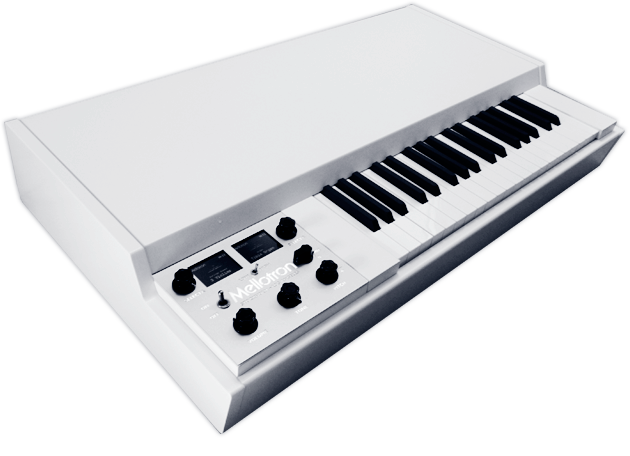
“Nights in White Satin” and “Strawberry Fields Forever” were among the first hits featuring the Mellotron. I’m also very fond of John Paul Jones’s Mellotron arrangements on the Led Zeppelin’s “Houses of the Holy,” in particular on “Rain Song.”
You can check out a bigger list of artists who have used the Mellotron here.
Long ago I purchased the GForce M-Tron plugin. As much as I loved the Mellotron sounds, I always had an issue interacting with this plugin. I would occasionally use it for a sound, but something didn’t connect for me. Same with the Arturia Mellotron V and other versions.
My frustration was the same with most virtual instruments: the plugins didn’t match my workflow. Volume rides, patch changes, pitch shifting, tape speed, and tone are all things I interact with regularly on the Mellotron.
Mellotron (and other) plugins cut me off from many of the essential functionalities of the instrument. Sure, I could automate the parameters. But, what good is that if the interaction is shaping the actual performance?
Well, as soon as Nick got back from his travels and commandeered his Mellotron, I knew I needed one. I had the itch terrible, too. In the short time I had Nick’s Mellotron, it became the leading tool for my writing and recording process.
What is a Mellotron?
Let me rewind the tape (a pun you’ll understand shortly) and explain what a Mellotron is for those who don’t know.
If you ask musicians what the very first sampler was, they often say it was the Akai MPC, the popular digital sampler from the late ’80s. But samplers existed before the MPC. For one, there was the Fairlight, released in 1979, which helped pave the way for modern music production.
But in truth, the very first sampler was an instrument called the Chamberlin. It was invented in 1946 by Harry Chamberlin in Upland, California.
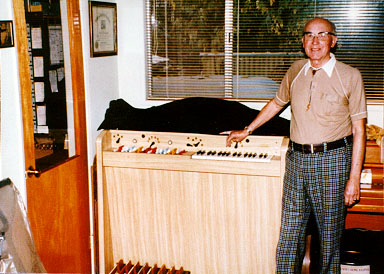
The Chamberlin had keys on it, just like a home organ. But underneath each key was a strip of magnetic tape with a recorded sound. When you pressed a key, it would play the recording until the tape ended. These recordings could be individual notes by an instrument, chords, or even a rhythmic groove.
Harry Chamberlin wanted the instrument to serve the home musician. But his device turned out to be difficult for most home hobby musicians to use. Over time, however, artists and musicians became obsessed with the sounds.
The Mellotron company re-engineered the principle of the Chamberlin completely and re-recorded all of the sounds with the only exception of the three violins. Which ironically is the most well-known sound. The Mellotron company took the idea of Chamberlin and made their own instrument. This is especially noticeable in the most well-known tape replay keyboard instrument: The Mellotron M400. This is the one Zeppelin, Bowie and numerous others used in the 70s, and this is also the instrument that led the re-discovery of the Mellotron in the 1990s.
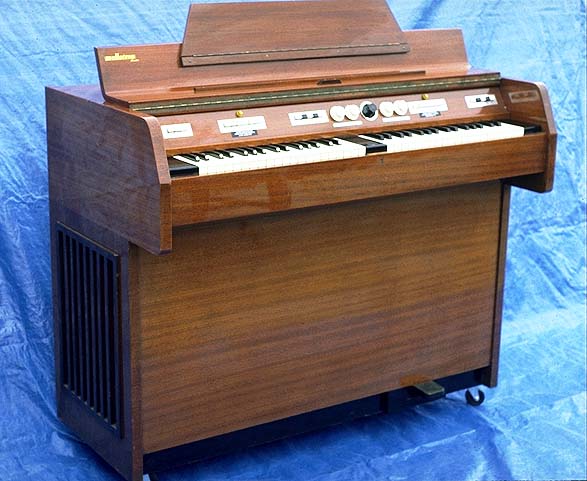
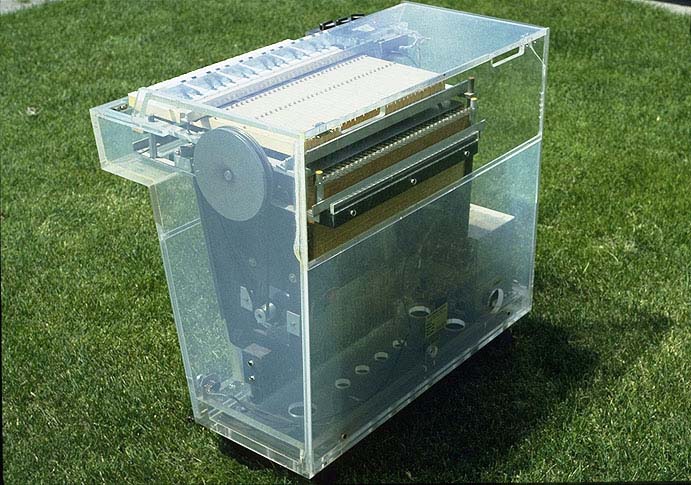
Read a more in-depth history of the Mellotron here.
Supersonic
There are sonic differences between the various Chamberlin and Mellotron models. Some think that all Mellotron samples are the same. But different recordings were made over the years. For instance, the Chamberlin and the Mellotron used different flute recordings — the “Strawberry Fields Forever” flutes are from the Mellotron MkII model.
Recordings aren’t the only differences. Circuit design and speakers also changed the timbre of the instrument. Their weight and design complexity made these instruments impractical for many musicians. If you wanted different sounds, you had to swap out tape banks — not a smooth operation. Plus, old Mellotrons and Chamberlins tend to be finicky instruments, even when they were brand new.
So when plugins initially hit the market, the appeal was immediate: They were in tune, reliable, and portable.
But we lost functionality. That is until Markus Resch started making its digital Mellotron. Markus is the world expert on Chamberlins and Mellotrons. He owns both the Mellotron and Chamberlin trademark and their original tape libraries and runs Mellotron Inc. in the US.
He didn’t just buy the names to market their legacy, as we’ve seen with buyers of other great brands. Markus has a deep love for the tone and history of Chamberlins and Mellotrons.
The decision to make a digital Mellotron wasn’t a half-hearted attempt. Markus set out to create a digital version that captured all the character of the originals.
The word “digital” invites cynicism. I’ve heard people mumble, “may as well use a plugin.” But let’s dig a little deeper into why the M400D is so special.
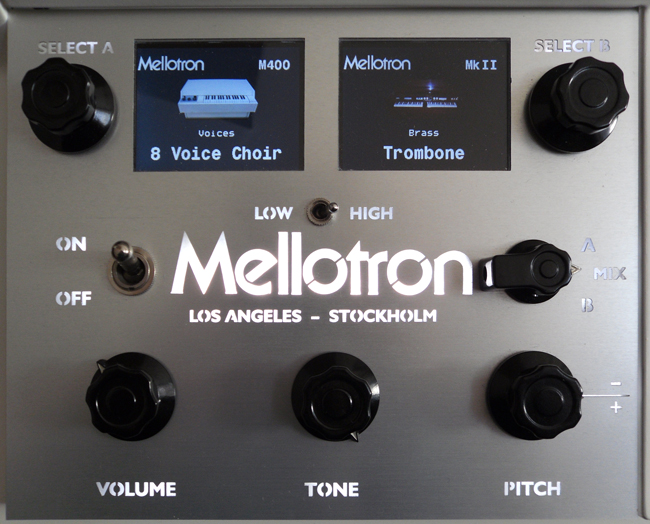
Why a Digital Mellotron?
First, the digital Mellotron has a tonal accuracy that plugins don’t have.
The M4000D uses first-generation recordings. Markus owns the worldwide rights to all the Mellotron and Chamberlin brands and has built analog Mellotrons with some significant improvements to the original playback mechanism and motor control.
Markus also employs a specific uncompressed 24-bit playback, which no plugin or other keyboard offers. Plus the sounds stream directly from flash memory which no other device does. There is a depth to the M4000D that you just don’t hear on other devices with Mellotron samples.
It is worth noting that Markus and his team have developed all of the firmware and circuits used in all digital Mellotrons from scratch. There have been rumors that they licensed or bought technology from other companies which is not true. Mellotron Inc. are also the only ones that are streaming directly from flash memory.
A few companies have licensed master tape samples from Markus, but as you now know, that’s only part of the Mellotron package. The playback engine is what’s missing from all other sample libraries. But it’s also worth noting that nobody has licensed more than 50% of the library of sounds available for the M4000D.
The regular M4000D, the largest digital Mellotron, also has polyphonic depth sensitivity. This means that you can control the volume of each note that is played back in real-time by how deep you press down the key. This technology was developed by Markus to emulate the behavior of a tape being pushed against the replay head. This also gives this instrument Polyphonic Aftertouch via MIDI, which is very unusual for keyboard instruments today.
Playback Device
The M4000D also has a cool option for tape playback. You can choose one of three systems to hear the sounds: Through an MkII, an M400, and a Chamberlin. In other words, you can determine whether you want all the samples playing through an original MkI or an MkII, complete with preamp and speaker tone.
That’s pretty deep, for you tone fiends. These are all tone-sculpting options. It’s for these reasons I think of the M4000D as an instrument, and not as a sample playback device. That’s the beauty of it, and that’s its difference from a plugin.
Further comparison of analog and digital reveals an M400 weighing in at 122 lbs — the lightest of the Mellotrons. Some older models weighed up to 300 lbs! The digital M4000D weighs 21 pounds. Which one would you rather move at a gig?
Speed
One of my favorite options on the Mellotron is the playback speed dial and switch. It allows me to change the character of a sound drastically. Recording engineers will pay close attention to tape speed during recording and playback, as it changes the EQ curve. The slower the tape, the more mellow the sound. The faster the tape, the tighter the tone.
The playback switch allows me to slow the playback (tape) down by one or two octaves. The playback knob allows me to adjust the playback up to +/- 700 cents (+/- 7 semitones).
Well, since the Mellotron is a tape instrument, the same applies to the timbre of an instrument or sample — it changes when slowed down.
The slowed tape allows you to create unusual sounds from familiar instruments. For example, I like slowing down saxophones to get a hint of Yamaha CS-80 synth tones.
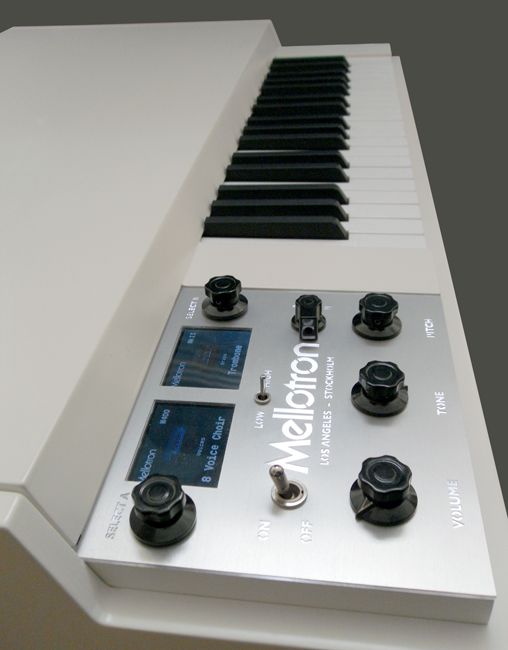
Pairing
The Mellotron loves analog effects. Tape delay and spring reverb make a great match. I had fun creating a tension cue for a TV show using a harp sound into a tape echo and spring reverb. I was riding the feedback of the tape delay. Depending on how long I allowed the Mellotron harp sound to play, it changed the delay sound. Cutting the note short was jarring in an exciting way. You can use the cut-off of the sound or tape end to your advantage.
Notice the amount of movement involved in that production — I just couldn’t have achieved it without the physicality afforded by the Mellotron.
What Does It Sound Like?
As many producers and recording engineers know, some gear just has a quirky charm. The Mellotron is full of charm.
Let’s listen to The Honey Trap.
You can hear me using the Mellotron M4000D Mini for flutes, organ, vibraphone, piano, and upright bass. The tones sit well with the baritone guitar and samples from an old drum machine.
Twilight Zone
I’m an admitted Bernard Herman fan. Especially from his work on the twilight zone. The vibraphone sample from the model MkII is the closest thing I can find with that character. You can hear the vibraphone and violins in my composition, “Dawn of the New Sun.” The last section of the song also includes a tibia organ.
Here is an example of twisting the Mellotron to create tension drones and sounds for a TV show. For this setup I used the Mellotron into an Electro-Harmonix Freeze pedal, into a Catalinbread CSIDMAN delay, into a Strymon Big Sky, into a TC Electronics Ditto Looper.
I would freeze a tone from the Mellotron, then mess around with the delay setting on the CSIDMAN, adjust the reverb, and then loop that. Sometimes I would repeat this process several times to stack a drone.
My objective was to make unsettling sounds. You could do similar things with a synth. But there is a texture I like when using the Mellotron. Having a real Mellotron makes it a very interactive experiment.
Here is a composition entirely created using the Mellotron and Chamberlin sounds and loops.
How about some 1970’s inspired Mellotron strings on top of an acoustic guitar?
If you’re the kind of producer who uses a Mellotron sound once every two years, you’re not going to make the upgrade. But if the Mellotron sound is part of your tonal palette, you’ll want to throw the plugins into a virtual trash bin when you hear the M4000D. There is no going back. There is Life Before Mellotron and Life After Mellotron.
Mellotron is a registered trademark of M Resch, Sweden








